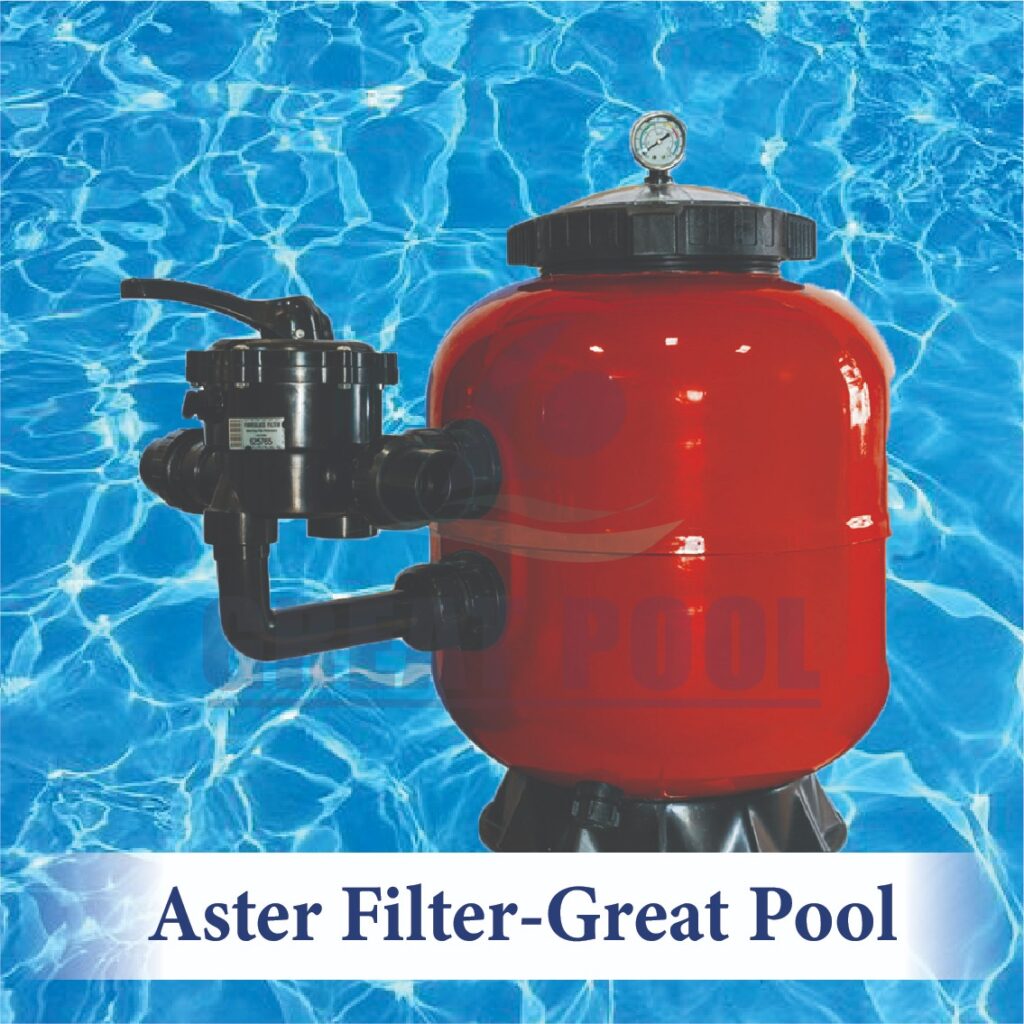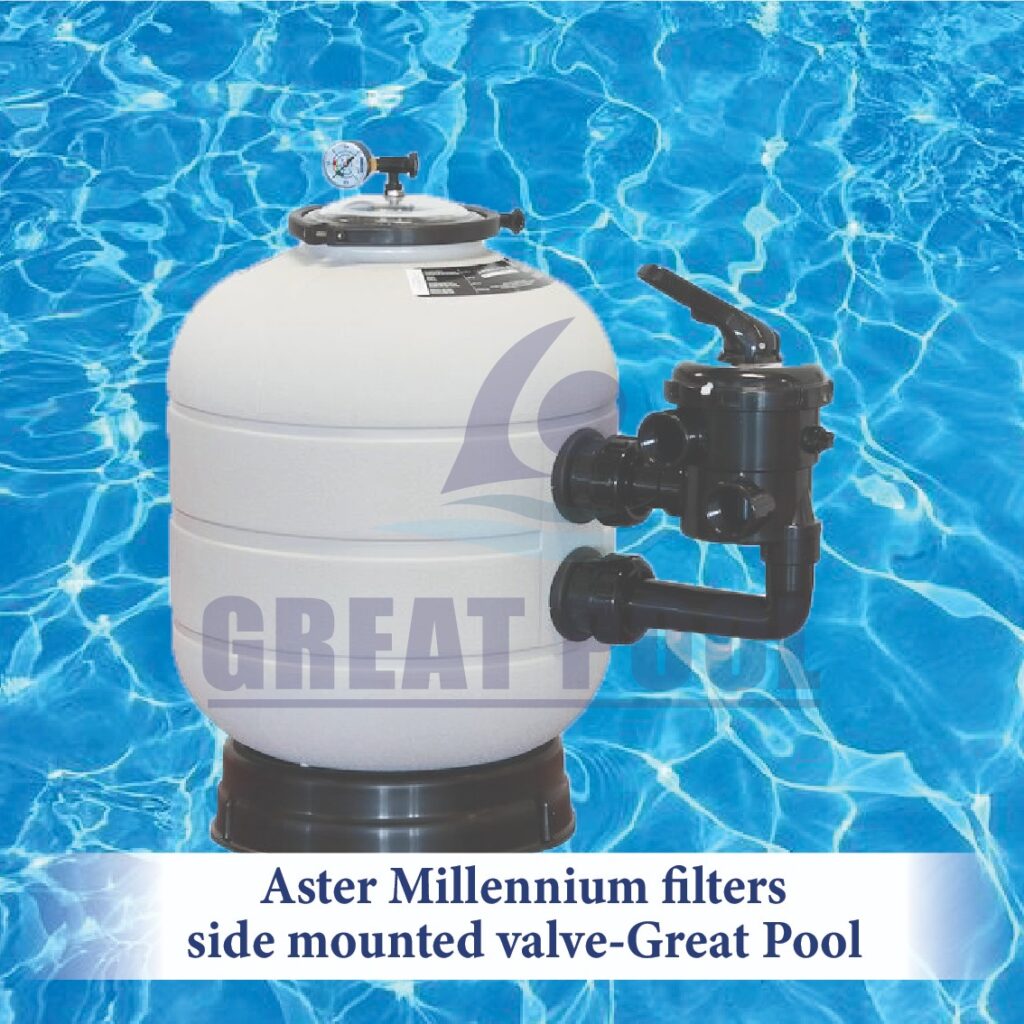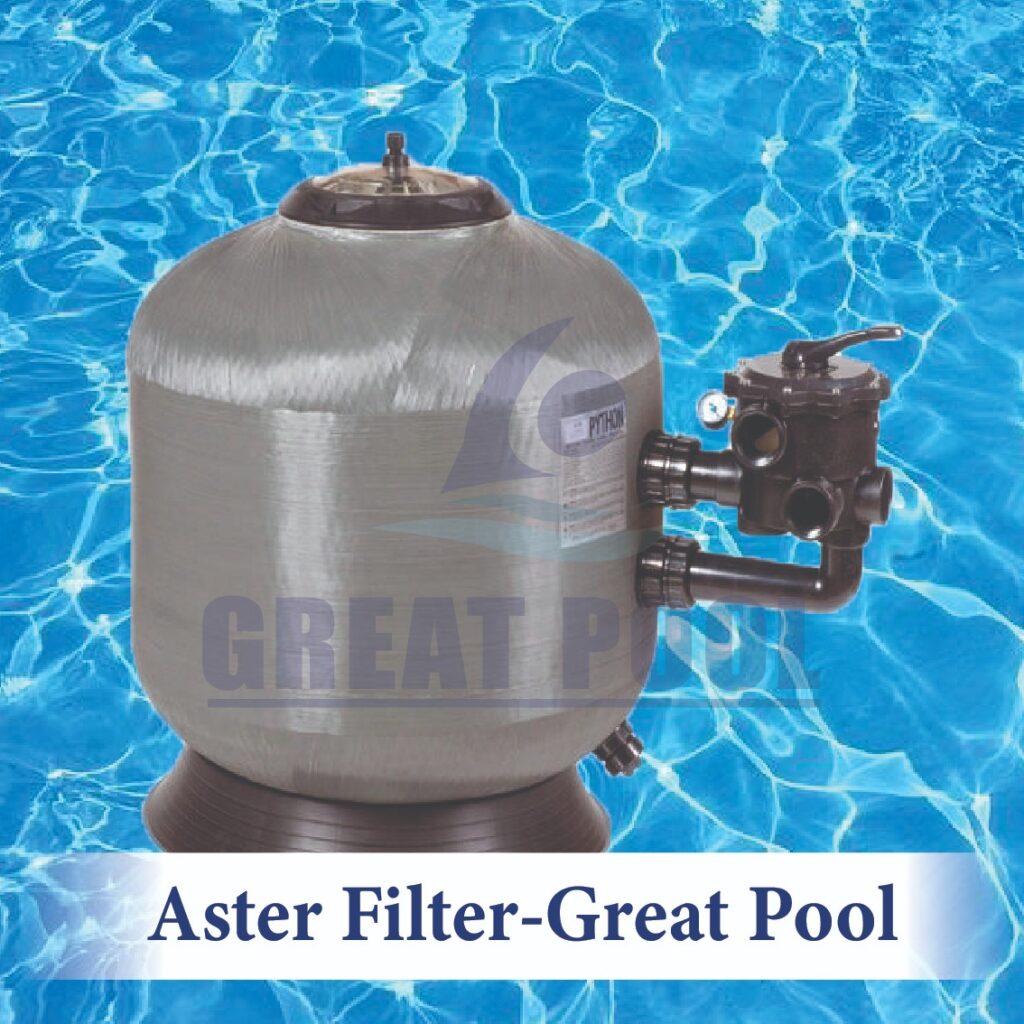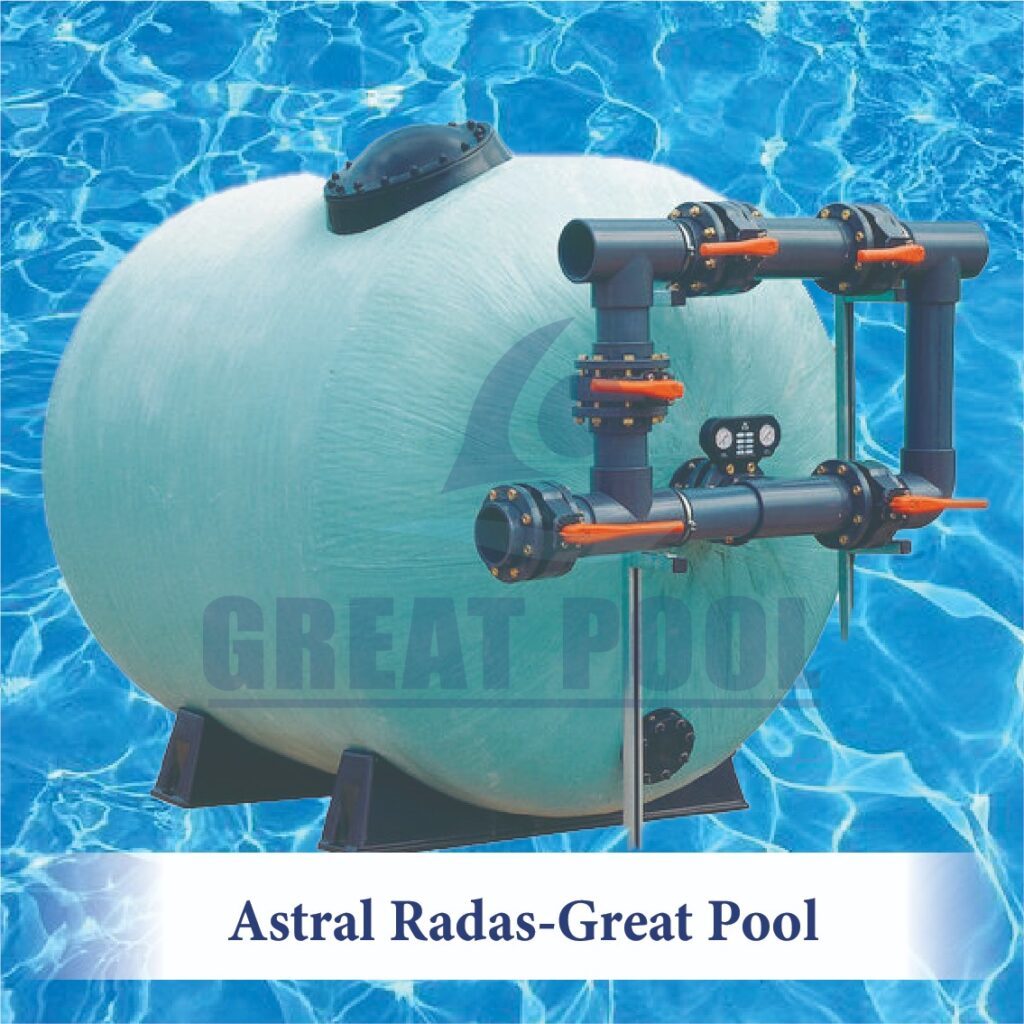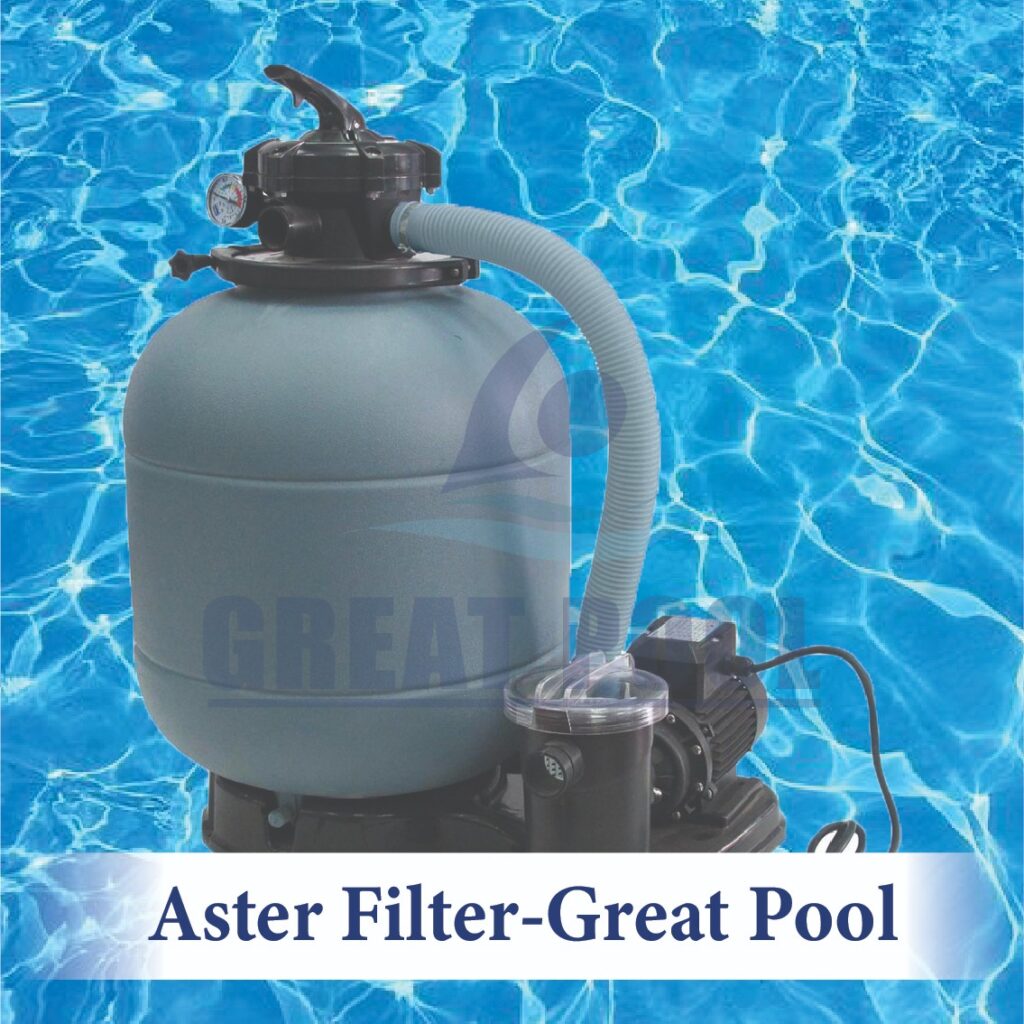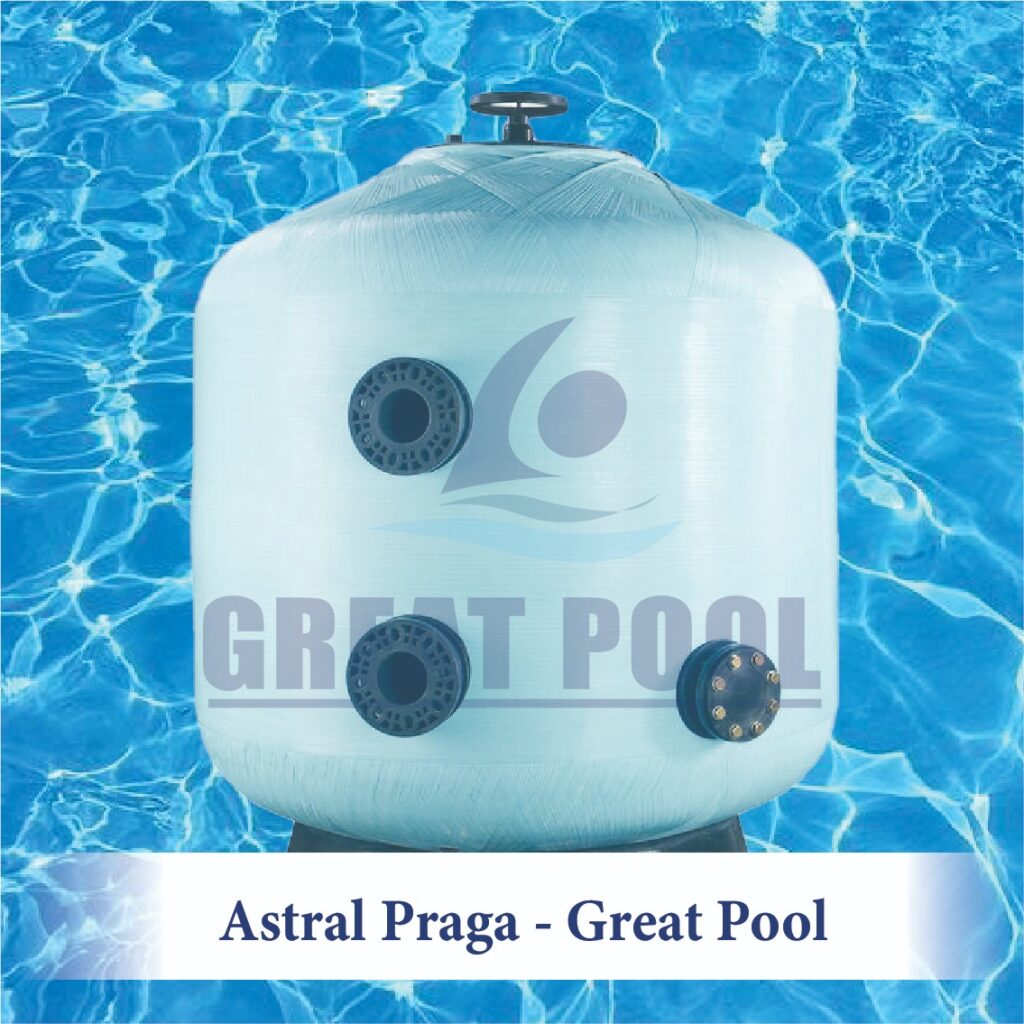Swimming Pool Sand Filters
Great Pool (pvt) Ltd. was founded by Mr. Zahoor Ghafoor in 19 April 2018. We are a reliable company that takes great satisfaction in offering exceptional pool services at reasonable costs. We are the largest and most reputable provider of specialized swimming pool equipment and accessories as well as swimming pool contractors in Pakistan. We are committed to provide excellent service at all times. We are the largest importers of sand filters of well known brands in Pakistan.
Sand filters are used as a step in the water treatment process of water purification. A sand filter is essentially a tank full of sand that’s connected to our pool’s filtration network. As pool water passes through the sand tank, the sand catches debris and particles and prevents them from returning to the pool. This results in cleaner, clearer water.
History:-
The ancient Greeks used sand filters to clean their bathhouse pools. That’s how old the sand filter technology is, but don’t let that be a drawback. Some of the greatest inventions thought up centuries ago continue to be used to this day.
Why is a sand filter better?
A sand filter will only filter down to 20 microns while a cartridge filter will filter down to 10 microns, half the amount. This means that a cartridge filter system will be able to rid our pool of more particles (dirt and debris) leaving it cleaner and more sparkling. Having a cloudy pool will be a thing of the past.
Types of filters:-
There are 3 types of filters –
- Cartridge Filters
- Sand Filters
- Diatomaceous Earth Filters (commonly called D.E.Filters).
Note: – With all types of filters, size matters. Our filter must be correct according to the size for our pool.
Anatomy of a Sand Filter:-
If we want to learn exactly how a sand filter moves water through the system, keep reading because we’re going to explain how the different parts of the filter come into play.
The top of the tank is where the pool water enters the sand filter, and this is where the filtering process always starts. It follows that the water must be pumped to the top of the tank to start the filtering cycle if it arrives through a pipe at the side of the tank.
It can be compared to a fountain. Any path can bring water into a fountain, but it must always trickle down from the top layer.
Once at the top of the sand filter tank, the pool water goes through a distributor to ensure its evenly spread over the sand bed.
How does a sand filter work?
Sand filters work by forcing water under high pressure through the sand from the top of the tank to the bottom of the tank. The pointed edges of the sand grains capture dirt, debris, and human waste as the water trickles down. When the water cycles through, smaller and smaller particles are removed from it until the sand becomes too dense and needs to be cleaned, also known as backwashed.
How can we backwash our sand filter?
The sand filter needs to be backwashed in order to clean the sand (manual or automatic). When we backwash our sand filter, water flows through the sand in the opposite direction, starting at the bottom and moving up to the top while collecting dirt and other particles.
As it reaches the top of the filter, it is then disposed of and does not go back into the pool, being sent to garbage. Backwashing is not a labor- or time-intensive process and may be finished in a matter of minutes.
The clean sand can resume filtering the pool water once the backwashing cycle is finished and the system has been cleaned.
Most sand filters use #20 sand or mesh crystal silica #20, but they may also use glass or zeolite. The sand filter housing is typically made from stainless steel, fiberglass, or plastic and is durable enough to withstand the high pressure required to run the filtration system.
After washing through the sand and leaving contaminants behind, the pool water enters the tank and flows to the laterals at the bottom. The lateral apertures are just big enough for water to flow through but not big enough for sand to get in and fill the pool.
The water used for backwashing exits the laterals at the bottom and ascends the sand before passing through the distributors at the top to reach the garbage.
Sand Filter Cleaning:-
As a standard, our sand will be cleansed when we backwash and rinse the sand filter. Sand filter sand can last five to seven years, but more than likely, we will replace it every three years or so. Aquafil users may find that they need to replace the sand every year because it tends to coagulate the waste in the tank.
Note: – If our sand develops clumps, we can soak our sand in a filter cleaner to remove them.
Sand Filter Sand Replacement:-
For a general overview of how to replace the sand in our sand filter, here are the steps:
- Drain the water from the tank and remove the filter head.
- Scoop out the old sand from the tank.
- Fill the tank up to the halfway point with water.
- Add sand filter sand according to our manufacturer’s instructions.
- Re-attach the filter head and backwash the water for 30 seconds.
- Return filtration to “filter” mode and double-check for leaks.
Note: We must carefully adhere to the instructions when replacing our sand. In particular, use a suitable facial covering when handling filter sand and adhere to the manufacturer’s instructions when replacing sand in filters.
As we calculate how much sand to put to the filter and when we run our backwash startup cycles, be sure to follow the directions.
Pay close attention to how much freeboard we leave before introducing new sand. We can double-check by looking for marks on our tank or reading our user manual, but typically it needs to be half the depth of the sand bed. (The manufacturer of our sand filter should provide recommendations for how much sand to add to achieve a balanced sand-to-freeboard ratio.)
Replacement of sand filter:
If properly cared for and maintained, a sand filter can last anywhere from 15 years to 25 years or more. In most cases, we could need to repair gaskets and valves but generally won’t need to replace the entire system for a long time.
Make sure to buy the right size and install the new filter in accordance with the manufacturer’s instructions when it comes time to replace our sand filter with a new one. Very crucial is matching the flow rate of our pool pump with the new sand filter..
Appropriate size of sand filter:-
The size of our pool and the volume of water it can retain will determine the size of sand filter we need. Most in-ground pools under 20,000 gallons will need a sand filter with a diameter of 24 inches, while pools over 50,000 gallons will need a sand filter with a diameter of 36 inches (the largest size). A 24-inch to 30-inch tank is needed for pools with capacities of 20,000 to 30,000 gallons.
We can go up a size when deciding the proper size, but we should avoid reducing because it could overload the system.
Which kind of pools work best with sand filters?
As long as the filter size is matched to the size of the pool, the type of pool won’t affect what kind of filtration system we can have or how efficient it can be. To determine an accurate turnover rate, be careful to take into account the amount of hours we intend to run our filter each day.
Which kind of filter is better?
Sand filter or cartridge filter
Pool water is filtered and debris is captured when it passes through a cartridge filter, which uses pleated cloth wrapped around a cylindrical core. Cartridge filters are used in spas and pools; they are small and don’t require backwashing. They are very simple to maintain since, depending on the size, they simply need to be rinsed with a hose every four to six weeks. If we’ve been experiencing issues with algae, the filter may occasionally need to be immersed in a filter cleaning solution.
In our experience, sand filters work better than cartridge filters at removing contaminants and maintaining clear pool water. Moreover, cartridge filters are simpler to maintain than sand filters, collect smaller particles, put less strain on the pool pump, and don’t need to be backwashed. Plus, we won’t have to touch any possibly harmful products (sand, silica, zeolite, etc.). But in domestic or commercial pools sand filters are the best in use.
Advantages of Sand Filter :-
- Sand can last 5-7 years without needing to be replaced, but it will most likely last 3.
- Replacement sand is relatively cheap.
- Sand filters are easy to maintain.
- Sand filters are commonly used and easily serviced.
Disadvantages of Sand Filter :-
- The pressure from a sand filter can be dangerous. For safety reasons, always follow our pool’s filter instruction manual.
- The water clarity is poorer as sand filters can’t remove particles as small as cartridge and D.E. filters can.
- The laterals in the sand filter can break, causing sand to make its way into the pool.
This information should make it simpler for us to decide whether a sand filter is a good option for our pool. Finally, we’d like to share some points that every pool owner can use: Remember to keep up with the pool’s upkeep. How effectively we maintain our pool and sand filter will affect its long-term attractiveness and functionality.

